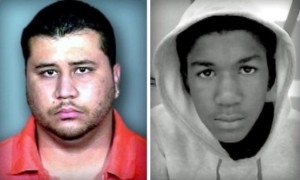 The recent killing of Trayvon Martin by George Zimmerman and the subsequent not-guilty verdict handed down n the case has raised a furore among many in the population. Honestly, I didn’t follow the case thoroughly, and have no position on the merits of the ruling.
The recent killing of Trayvon Martin by George Zimmerman and the subsequent not-guilty verdict handed down n the case has raised a furore among many in the population. Honestly, I didn’t follow the case thoroughly, and have no position on the merits of the ruling.
The main accusation was that this was a case of racial profiling. Zimmerman saw a teenager of African descent and unfairly targeted him. But, looking at the situation, how many of us might have responded similarly in such a case? While many of you will say that you would not have, in actuality you would be wrong.
You see, we all have a hidden bias in many cases, often without realising it. We fit groups into stereotypes and make judgements based on it. It’s not racial profiling although you may call it as much. It’s our brains tendency to group things. If we have in our heads the image of what a dangerous person may look like, then anyone matching that description will cause you to feel that they’re a dangerous person, no matter how wrong we may be.
This is a natural instinct. It’s what allowed us to survive all these years. If we see something big and hairy with huge teeth eat our friend, then we learn to avoid anything that’s big and hairy with huge teeth. We don’t judge every big, hairy, large-toothed animal individually as to whether this one is friendly; we just run. This happens even if we heard that something big and hairy with huge teeth ate someone and never even experienced it.
Sometimes this works for us, and sometimes it doesn’t. I have a doctor friend who told me that he had colleague who was robbed by some men posing as customers; they were all wearing shirts and ties and looked presentable. His colleague did not feel threatened when they let the men in. Now my doctor friend makes a totally different judgement when allowing anyone into his office.
So you should ask yourself, what do you think a bad person looks like? How would you feel if you’re walking down the street and see such a person walking in the opposite direction towards you? What hidden biases do you hold?
You can find out more about your hidden biases using an Implicit Association Tests (IAT). You can test yourself on the Project Implicit Website and find out your hidden biases. You can read more on hidden biases on this page.
As time progresses and generations change, our hidden biases will diminish, but for us older heads it may be too late. We have to start teaching children that equality matters, which is hard, if the adult population feels, and says, outright that we are not all equal.
But we need to start accepting and addressing our prejudices and our issues of inequality, otherwise we will continue to have more cases of Trayvon Martins and George Zimmermans, and those are always lose-lose.